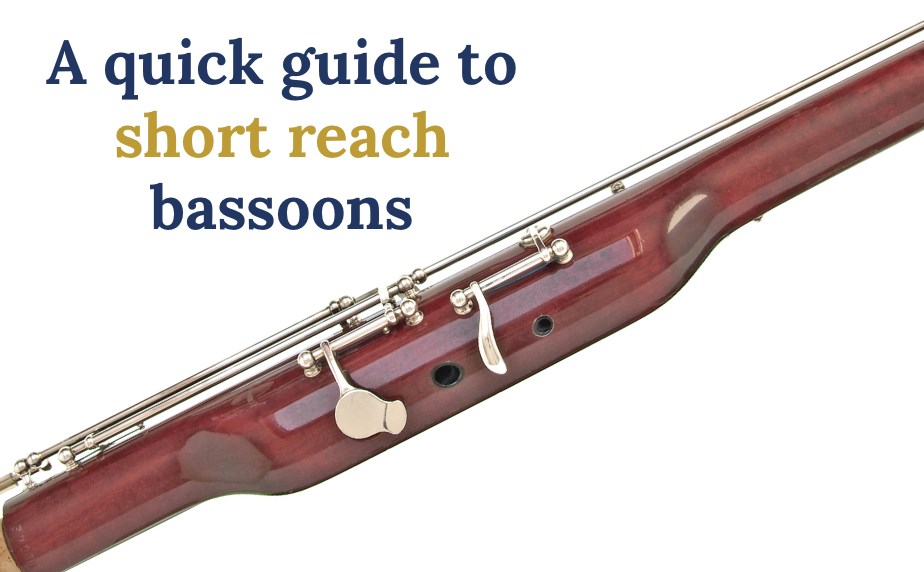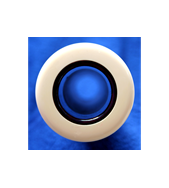A quick guide to short reach bassoons
June 12th, 2025

A quick guide to short reach bassoons
What is a short-reach bassoon?
A short-reach bassoon is a full-sized bassoon with modified keys to reduce the distance you have to stretch with your fingers/hands. Different manufacturers vary in their approach, but in general terms the fingers you need to stretch the most on a standard bassoon are the ones which are brought closer. For example, all of the left-hand thumb keys are typically longer, and therefore easier to reach. Likewise, the right-hand low G is longer and moved over, and the Bb trill key is removed (often removed anyway as it can get in the way and is little used by most people).
Two of the leading brands in the UK are Adler with their 1356 and Schreiber with their S13, although other companies make them as well. We have one Adler here and two Schreibers here and here for sale currently second hand.
Who is a short-reach bassoon for?
Anyone from children up to adults is suited to a short-reach. Anyone, that is, with smaller hands and fingers than an average adult. And it can be a great solution for those who perhaps have arthritis or other age-related issues, or have maybe injured their hands as well.
We have sold plenty of short-reach bassoons to adults of all ages and, for those who need them, they can be the difference between continuing to play the bassoon and having to give up.
Short-reach bassoons are also the ideal solution for children who have outgrown their mini bassoon but still can’t cope with the stretch on a standard bassoon.
How do they sound?
Short reach bassoons are full size instruments, made more or less identically to non-short-reach offerings, apart from changes to the keywork, so they have similar or identical tone, intonation and performance to a standard reach bassoon.
What are the alternatives?
- Adding a left-hand third-fingered covered hole
The most difficult-to-reach finger-hole on a standard bassoon is usually the left hand third finger. If you reach to cover that finger hole, to play a C note, then the thumb is pulled away from the thumb keys when the reach is too large. Therefore, a common modification is to add a left-hand third-fingered covered hole. It moves the third finger sideways and greatly reduces the distance to reach, and therefore strain is reduced; and technique is improved.
We can add this key to most bassoons in our workshop, so ask if you are having difficulty reaching that tone hole, or feeling strain in your left hand. As we age, our hands can become less flexible, so a short reach key can really help us play for longer without strain by reducing the stretch.
Another alternative
- A mini bassoon
For children whose hands are too small for even a short-reach bassoon the obvious answer is a mini bassoon. Our mini bassoons have proved highly popular with schools and music services all over the UK for starting children on the bassoon at a younger age, at seven or eight years old generally. They play in G, a fifth higher than a standard bassoon, but the keywork is very similar to a full-sized bassoon, just on a smaller scale. Pupil can, therefore, move seamlessly to a short-reach or a full-size bassoon when ready.
Get in touch if you would like to try a short-reach bassoon, full-size or mini bassoon - we'll be happy to help.






